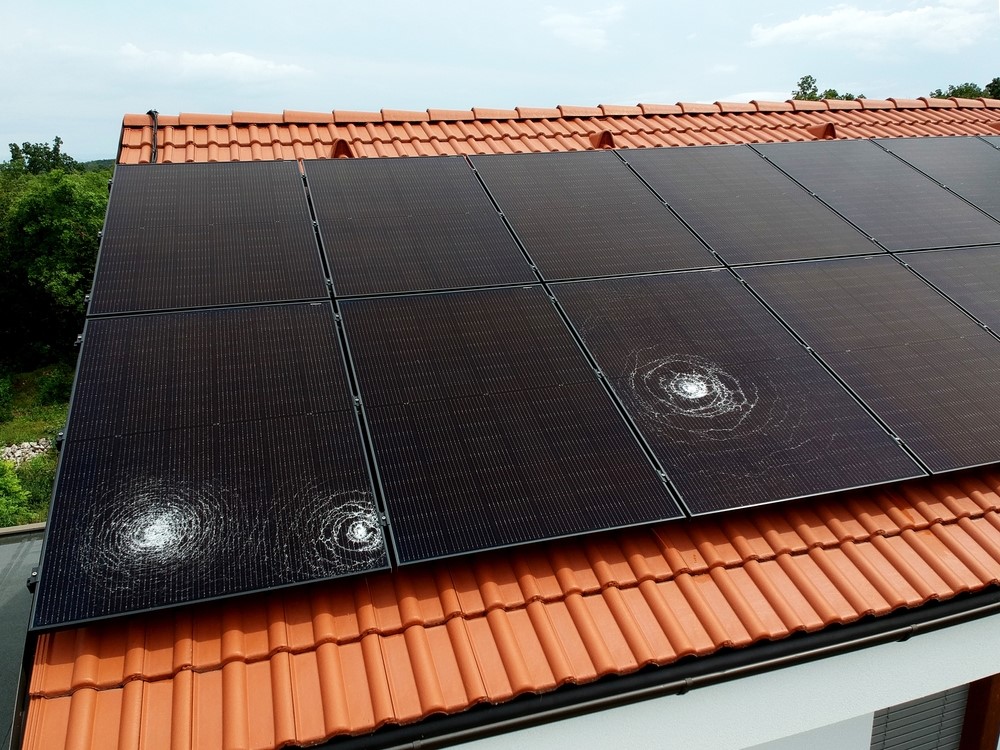Does My Home Insurance Cover Hail Damage?

Hail has pelted your home and damaged the siding and cracked a window. Is hail damage covered by home insurance?
Yes, most standard home insurance policies in Canada cover hail damage to your home's structure (roof, siding, windows) and contents, including water damage from openings created by hail or wind.
Hail damage is a common peril covered in most standard home insurance policies. If a hailstorm damages your home, your insurance company should cover the cost of repair or replacement, as long as hail damage is listed in your policy.
Western Financial Group, a 100% Canadian company, can help you navigate your business, car, and home insurance during this period of economic uncertainty.
Here’s what’s usually covered by hail damage:
- Damage to the exterior of your home: This includes damage to your roof (shingles, vents, flashing), siding, windows, and doors caused directly by hail impact.
- Damage to exterior structures: Sheds, decks, fences, and other structures on your property can also be covered if damaged by hail.
- Damage to personal property inside your home: If hail creates an opening in your roof or walls and allows water to enter and damage your belongings, this damage is usually covered.
- Additional living expenses: If hail damage makes your home uninhabitable, your policy may cover temporary housing costs, meals, and other necessary expenses while your home is being repaired. This coverage has limits, so it's important to check your policy.
- Wear and tear or old roof exclusions, some policies limit coverage if your roof is too old or not properly maintained.
- Cosmetic damage, some insurers won’t pay to fix dents or dings if it doesn’t affect function (e.g., metal roof dimples).
- Detached structures, like sheds or garages, may require extra coverage.
- Vehicles, hail damage to your car is not covered by home insurance. You’ll need comprehensive auto insurance for that.
- Mobile homes: May have restricted coverage; confirm with your provider.
- Plants and landscaping are usually excluded.
What might not be covered:
Exclusions and limitations:
Note that hail-prone areas may have separate, higher deductibles (e.g., 1-5% of dwelling coverage)
What to do if your home is damaged by hail:
Ensure your safety
Check for any immediate hazards like downed power lines or unstable structures before inspecting the damage.
Document the damage
Take clear photos and videos of all the hail damage to your home and any affected personal property. Note the date and time of the hailstorm.
Contact your insurance provider immediately
Report the damage to your insurance company or broker as soon as possible. They will guide you through the claims process.
Take reasonable steps to prevent further damage
This might include covering broken windows or putting a tarp over a damaged roof section. Keep records of any expenses related to these temporary repairs, as they might be reimbursable.
Do not make permanent repairs before the insurance adjuster inspects the damage
The adjuster needs to see the damage to assess your claim properly.
Get estimates from reputable contractors
For significant repairs, it's a good idea to get multiple quotes from qualified contractors. Your insurance company may also have a list of preferred contractors.
Keep detailed records
Keep all communication with your insurance company, repair estimates, and receipts for any related expenses.
Do you know what Canadian city gets the most hail?
Calgary is at the heart of Hailstorm Alley. Hailstorm Alley stretches from High River to Calgary, through Red Deer to Lacombe and then westward to Rocky Mountain House. It’s also called Hail Alley, which is described as the region between Edmonton and High River. This area is known for destructive hailstorms and it’s Canada’s No. 1 area for hail.
How to stay safe in a hailstorm
Get shelter in a safe, secure building. Stay away from windows, glass doors or skylights. Bring your children and pets inside immediately. Provide shelter for any livestock.
If you are driving, find a place to safely pull off the road. Protect yourself from shattered glass by facing away from all car windows.
If you are outdoors with no immediate shelter, crouch down, face away from the wind and protect your head and neck with your hands.
What other extreme weather is usually covered by home insurance?
Windstorms: Damage from high winds, tornadoes, and hurricanes involving roof, siding, or window repairs.
Lightning: Fires or electrical damage due to lightning strikes
Wildfires: Direct fire damage to structures and personal property.
Ice storms: Most standard home insurance policies cover damage caused by ice storms, including roof damage from ice dams and burst pipes, provided the damage is sudden and accidental and not due to neglect or lack of maintenance.
Final thoughts
Hailstorms can be violent, causing damages to homes, cars, businesses, and crops. Understanding how your insurance covers hail damage can give you peace of mind. Hailstorms can be common in Canada from May to October, especially during the summer months.



